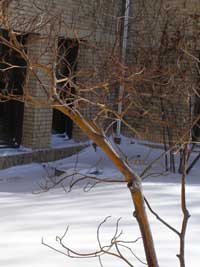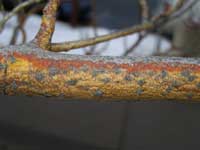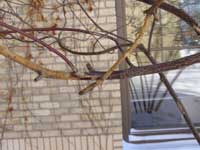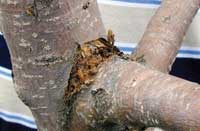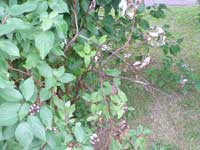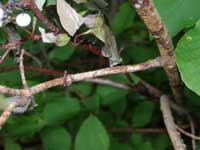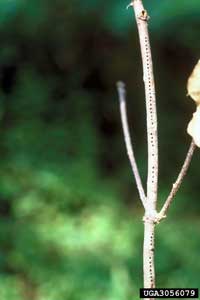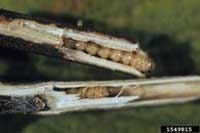Extension > Garden > Diagnose a problem > What's wrong with my plant? > Deciduous > Dogwood > Dead or dying branches
Dogwood > Stems/branches > Dead or dying branches
1 of 4
Golden canker
Cryptodiaporthe corni
- Only infects pagoda dogwood, Cornus alternafolia
- Infected branches turn tan to orange and are covered with orange blister like spore producing structures
- Infected branches often die during dormancy and fail to leaf out in the spring
- More information on Golden Canker
2 of 4
Dogwood borer
Synanthedon scitula
- Holes and brown colored frass around pruning scars, injuries and burr knots
- Crown dieback
- Epicormic growth beneath infested area on tree
- Particularly a pest of flowering dogwood
- More information on Dogwood borer
3 of 4
Botryosphaeria canker
Botryosphaeria dothidea
- Leaves on one or more branches wilt, turn brown and die
- Bark on affected branches is darker, cracked, or blistered at the site of the canker
- Wood beneath the canker is dark brown
- Common on shrubs stressed by drought, winter injury and other factors
- More information on Botryosphaeria canker
4 of 4
Dogwood twig borer
Oberea tripuncata
- Larval tunnels inside branches, making holes in stems to push out frass and sawdust
- Larvae feed downward, holes often occur near outside end of branches
- Larval feeding cases leaves on random branches to wilt and turn brown
- Adults chew on the underside of midrib of leaves causing the leaf to curl downward at tip
- More information on Dogwood twig borer



